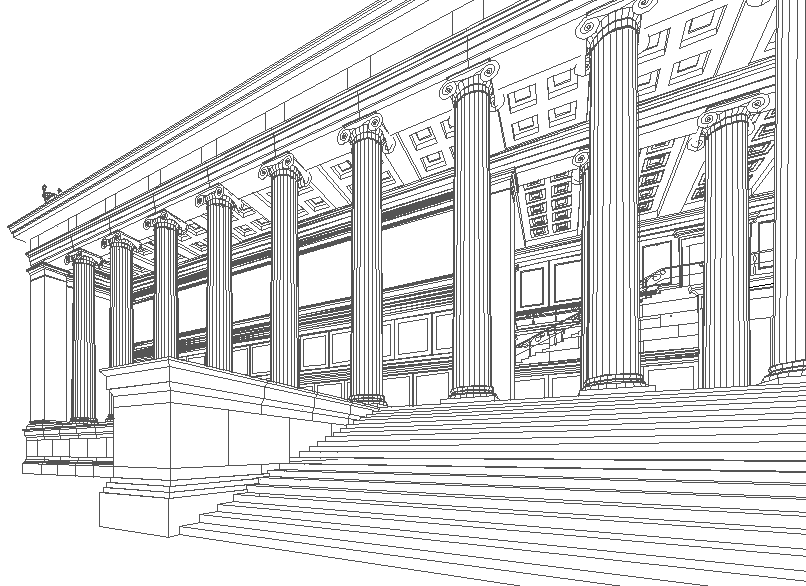
Your parenthetical reference to osmotic has not escaped me. Indeed it surprised me, especially since you point out a very interesting example of that inside/outside, permeable space that manifests the osmotic in architecture. I know that I from time to time have posted (vague?) ideas about the osmotic (metabolic, etc.) in architecture, but I didn't think any of it was much considered by others. Seeking out the osmotic in architecture is a rewarding experience. So far, the best gauge I can come up with is to see the Pantheon in Rome and Kahn's Kimball Art Gallery and Schinkel's stair hall (German doors?) of the Altes Museum as osmotic at the high end, and an open bus stop at the low end. There's lots of in-between stuff out there, and, of course, it would be great if architects began to consciously create osmotic spaces.
1999.07.23
I am not proposing "a different sort of dynamic as governing architectural theories, based on metabolism." Rather I am working out a theory (chronosomatics) whereby human imagination reenacts corporal physiology and/or morphology. The metabolic imagination is just one of the human imaginations; the others include the extreme imagination, the fertile imagination, the pregnant imagination, the assimilating imagination, the osmotic imagination, the high-frequencies imagination. I then further theorize that these various operative modes of imagination are then, in turn, reenacted in architecture.
For example, I see the Pantheon and Kahn's Kimball Art Museum as both prime example of an architecture that reenacts the osmotic imagination, which is an imagination that reenacts the physiological process of osmosis, which is the equalizing diffusion of concentrations either side of a semipermeable membrane. Both the Pantheon and Kimball are semipermeable (each in its own way) and both buildings work towards 'equalizing' the outside and the inside (again each in its own way). Furthermore, osmotic architecture seems to often capture a 'sacred' quality.
2000.02.16
|